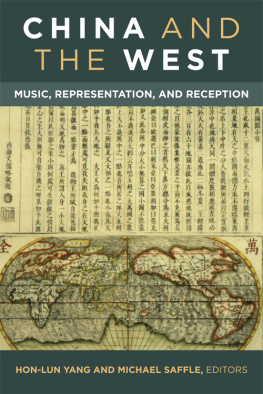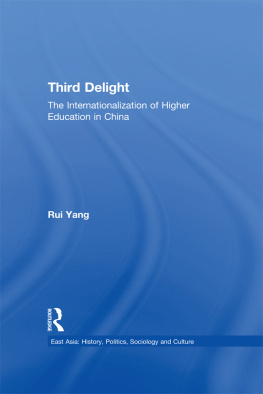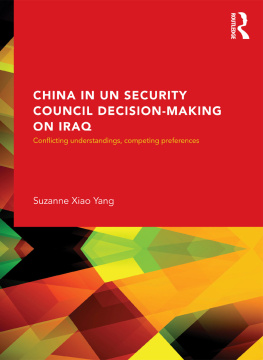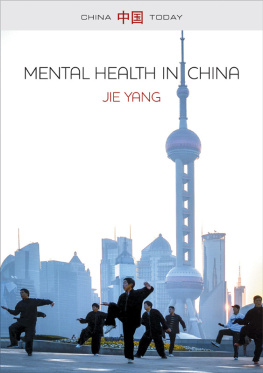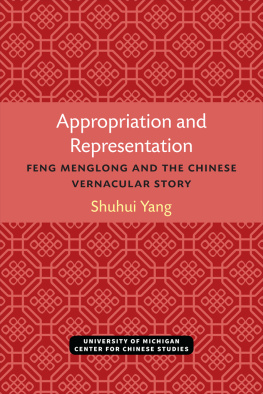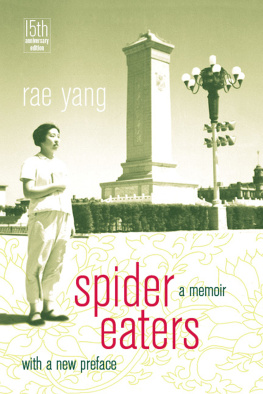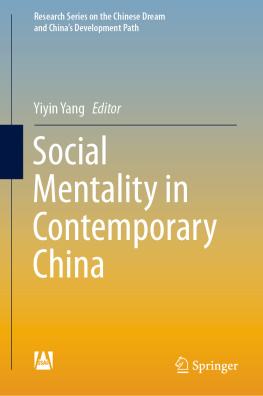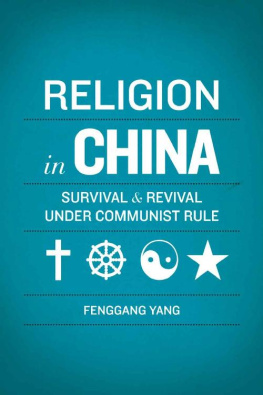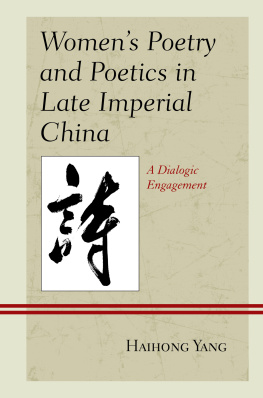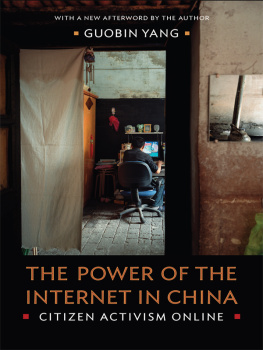Hon-Lun Yang - China and the West: Music, Representation and Reception
Here you can read online Hon-Lun Yang - China and the West: Music, Representation and Reception full text of the book (entire story) in english for free. Download pdf and epub, get meaning, cover and reviews about this ebook. year: 2018, publisher: University of Michigan, genre: Home and family. Description of the work, (preface) as well as reviews are available. Best literature library LitArk.com created for fans of good reading and offers a wide selection of genres:
Romance novel
Science fiction
Adventure
Detective
Science
History
Home and family
Prose
Art
Politics
Computer
Non-fiction
Religion
Business
Children
Humor
Choose a favorite category and find really read worthwhile books. Enjoy immersion in the world of imagination, feel the emotions of the characters or learn something new for yourself, make an fascinating discovery.
- Book:China and the West: Music, Representation and Reception
- Author:
- Publisher:University of Michigan
- Genre:
- Year:2018
- Rating:3 / 5
- Favourites:Add to favourites
- Your mark:
- 60
- 1
- 2
- 3
- 4
- 5
China and the West: Music, Representation and Reception: summary, description and annotation
We offer to read an annotation, description, summary or preface (depends on what the author of the book "China and the West: Music, Representation and Reception" wrote himself). If you haven't found the necessary information about the book — write in the comments, we will try to find it.
Hon-Lun Yang: author's other books
Who wrote China and the West: Music, Representation and Reception? Find out the surname, the name of the author of the book and a list of all author's works by series.
China and the West: Music, Representation and Reception — read online for free the complete book (whole text) full work
Below is the text of the book, divided by pages. System saving the place of the last page read, allows you to conveniently read the book "China and the West: Music, Representation and Reception" online for free, without having to search again every time where you left off. Put a bookmark, and you can go to the page where you finished reading at any time.
Font size:
Interval:
Bookmark:
 Page i
Page i 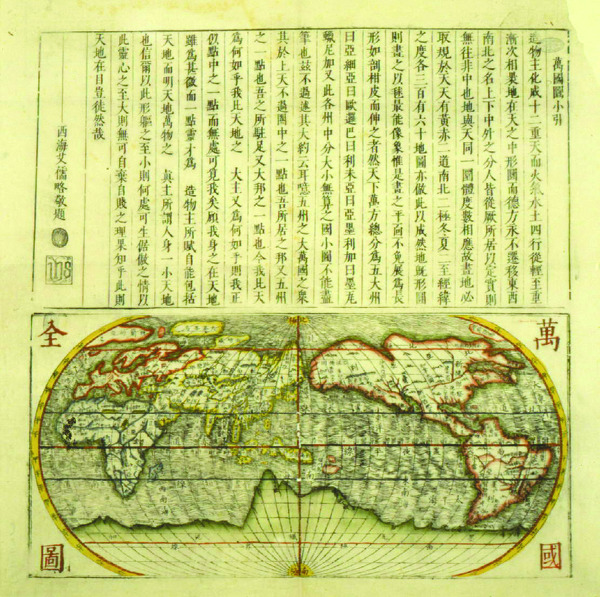 Wanguo Quantu [A Map of the Myriad Countries of the World] was made in the 1620s by Guilio Aleni, whose Chinese name appears in the last column of the text (first on the left) above the Jesuit symbol IHS. Alenis map was based on Matteo Riccis earlier map of 1602. Page iii
Wanguo Quantu [A Map of the Myriad Countries of the World] was made in the 1620s by Guilio Aleni, whose Chinese name appears in the last column of the text (first on the left) above the Jesuit symbol IHS. Alenis map was based on Matteo Riccis earlier map of 1602. Page iii Edited by Hon-Lun Yang and Michael Saffle
University of Michigan Press
Ann Arbor
Page iv Copyright 2017 by Hon-Lun Yang and Michael Saffle
All rights reserved
This book may not be reproduced, in whole or in part, including illustrations, in any form (beyond that copying permitted by Sections 107 and 108 of the U.S. Copyright Law and except by reviewers for the public press), without written permission from the publisher.
Published in the United States of America by the
University of Michigan Press
Manufactured in the United States of America
A CIP catalog record for this book is available from the British Library.
Library of Congress Cataloging-in-Publication Data
Names: Yang, Hon-Lun, editor. | Saffle, Michael, 1946 editor.
Title: China and the West : music, representation, and reception / edited by Hon-Lun Yang and Michael Saffle.
Description: Ann Arbor : University of Michigan Press, 2017. | Includes bibliographical references and index.
Identifiers: LCCN 2016045491| ISBN 9780472130313 (hardcover : alk. paper) | ISBN 9780472122714 (e-book)
Subjects: LCSH: MusicChinese influences. | MusicChinaWestern influences. | Exoticism in music. | Orientalism in music.
Classification: LCC ML193.C45 2017 | DDC 780.951dc23
LC record available at https://lccn.loc.gov/2016045491
Page v For Cho, Zoe, Reese, and mom with love
H-L Y
For QI Zhenjun , ZHAO Li ,
ZHAO Yan , and ZHOU Xiaoping ,
all of them new members of my family,
as I am a new member of theirs
M S
The present volume had its origin in a four-day conference held in Hong Kong, a city often regarded as an East-West melting pot. Entitled East Meets West: Sino-Western Musical Relations/Intersections/Receptions/Representations, the conference took place at Hong Kong Baptist University from 16 to 19 April 2009 and was made possible by support provided by that university, its Department of Music, and the Hong Kong Arts Development Council. Both the conference and this, the volume that it inspired, testify to the efficacy of cross-cultural and interdisciplinary research. The conference itself brought together musicologists, ethnomusicologists, and music theorists from Austria, Belgium, Canada, Hong Kong, Mainland China, the Netherlands, and the United States. These participants sought to explore issues pertinent to East-West musical encounters of many kinds, especially those involving China.
The phrase cultural encounters often refers to actual contacts between individuals or groups of people of different origins, ethnicities, or nations. In the present volume, the term encounter refers as well to forms of musical representation, appropriation, and discourse. Encounters may involve products, not merely exchanges of ideas. The goal of this volume is a holistic approach to the study of Chinese-Western musical relationships, whatever their character or outcome. Inevitably, such an approach must be informed by notions of exoticism, orientalism, globalization, transculturation, and hybridity, but our contributors do not let these notions ignore a host of heterogenic/polyphonic cross-cultural musical activities across centuries of exchange. In the introductory essay, Hon-Lun Yang addresses these and other closely related issues in terms of existing theoretical approaches to the Chinese-Western musical problem.
Part 1 is devoted to actual encounters between Chinese and European individuals and to the artifacts, instruments, institutions, and compositions that resulted from these encounters. Part 2 examines theatricalized and mediated encounters involving performances of imagined exotics by cultural Page x insiders as well as outsiders, and for Chinese as well as Western audiences. Part 3 is devoted to musical encounters as manifested in musical languages, sonorities, and subject matters of intercultural compositions by composers from East and West. Part 4 is devoted to reception studies and considers ways in which differences are articulated in musical discourse by different actors serving different purposes, whether self-promotion, marketing, or modes of nationalwhich sometimes means propagandisticexpression.
Part 1 begins with David Francis Urrowss study of the pipe organ in China. Urrows opens a window into Sino-Western musical exchanges of the sixteenth, seventeenth, and eighteenth centuries. In addition to facilitating worship, organs functioned as mechanisms of cultural diplomacy and were presented as gifts to several Chinese emperors, to demonstrate what Urrows calls the curious and wonderful invention from the West. In his conclusion, Urrows notes that Chinas positive and open-minded reception of this Western instrument challenges the myth of an isolationist China intent on rejecting Western culture and technology.
Just as the pipe organ was an early icon of Western technology and engineering, the symphony orchestra served as a symbol of Western imperial power for both resident and expatriate audiences. Hon-Lun Yangs discussion of the Shanghai Municipal Orchestra (SMO), Chinas first professional orchestra, offers insights into another phase of Sino-Western interaction. Established in 1881 as a municipal band serving British interests in Shanghai, the SMO took on a multitude of new meanings and eventually became a metropolitan organization of which Shanghai was and still is proud. As such, the orchestra played an important role in the twentieth-century transculturation of Chinese music.
Cornelia Szab-Knotik explores the uncharted territory of Austrian-Chinese musical relations. Her essay considers Chinese aspects of a nineteenth-century Viennese amusement park, Prince Sou-Chong as a character in an Austrian operetta, Austrias reception of Chinese pianist Lang Lang, and the exploitation of the gifted body in terms of the Sino-Austrian television movie Mozart in China. Szab-Knotik raises a number of issues pertinent to the nature of cultural encounters, from notions of orientalism and chinoiserie that are associated with the performing arts to recent mediated encounters between East and West. Her discussion of Mozart in China unpacks film as a form of nationalist self-representation that, as she puts it, covertly reasserts colonialist prejudices in favor of Western cultural superiority, revealing the seemingly banal conclusion that orientalist attitudes Page xi remain powerful within the twenty-first centurys world of technologically sophisticated unawareness.
Part 2 considers staged encounters that exploited as well as repositioned Westernized images of a more or less realistically portrayed China. Michael Saffle deals with some two dozen Chinese-themed operettas and musical comedies presented during the late nineteenth and early twentieth centuries on London and New York stages. Works considered include Cole Porters Anything Goes and the still-familiar Chu Chin Chow as well as The Pearl of Pekin, A Trip to Chinatown
Font size:
Interval:
Bookmark:
Similar books «China and the West: Music, Representation and Reception»
Look at similar books to China and the West: Music, Representation and Reception. We have selected literature similar in name and meaning in the hope of providing readers with more options to find new, interesting, not yet read works.
Discussion, reviews of the book China and the West: Music, Representation and Reception and just readers' own opinions. Leave your comments, write what you think about the work, its meaning or the main characters. Specify what exactly you liked and what you didn't like, and why you think so.

